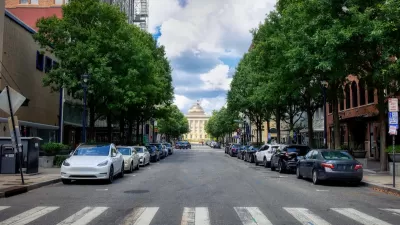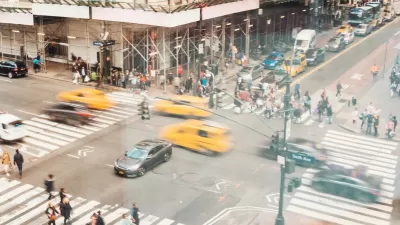Forget self-driving cars—some low-cost artificial intelligence tools can improve traffic safety now.

Although autonomous vehicles frequently steal the media spotlight, Tanya Mohn argues that there are more practical, immediate ways to use artificial intelligence to improve traffic safety. As Mohn writes, “Artificial intelligence is already being used to enhance driving safety: cellphone apps that monitor behavior behind the wheel and reward safe drivers with perks and connected vehicles that communicate with each other and with road infrastructure.”
According to David Ward, president of the Global New Car Assessment Program, there are several “beneficial, low-cost, intermediate technologies that are available now. A prime example is intelligent speed assistance, or I.S.A., which uses A.I. to manage a car’s speed via in-vehicle cameras and maps,” a technology that will soon be mandatory in the European Union.
Other technologies include cameras that can assess distracted driving behavior, allowing law enforcement to see whether a driver is holding a phone below the dashboard, for example. Some transportation and city officials see A.I. as a tool that can further Vision Zero goals. Data gathered and analyzed using A.I. tools can help transportation planners understand traffic patterns and anticipate trends. And while some see speed cameras as a discriminatory revenue grab, others believe automated traffic enforcement can reduce potentially violent interactions with law enforcement and save lives by reducing crashes.
“Not everyone is sold on a reliance on computer learning. Mr. Ward, of the Global New Car Assessment Program, said humans still outperform artificial intelligence.” Additionally, “As with many A.I. innovations, the technology also raises privacy issues.” Policymakers looking to use A.I. to improve traffic safety will have to balance the benefits of the technology with privacy and liberty concerns.
FULL STORY: Can A.I. All but End Car Crashes? The Potential Is There.

Planetizen Federal Action Tracker
A weekly monitor of how Trump’s orders and actions are impacting planners and planning in America.

Maui's Vacation Rental Debate Turns Ugly
Verbal attacks, misinformation campaigns and fistfights plague a high-stakes debate to convert thousands of vacation rentals into long-term housing.

Restaurant Patios Were a Pandemic Win — Why Were They so Hard to Keep?
Social distancing requirements and changes in travel patterns prompted cities to pilot new uses for street and sidewalk space. Then it got complicated.

In California Battle of Housing vs. Environment, Housing Just Won
A new state law significantly limits the power of CEQA, an environmental review law that served as a powerful tool for blocking new development.

Boulder Eliminates Parking Minimums Citywide
Officials estimate the cost of building a single underground parking space at up to $100,000.

Orange County, Florida Adopts Largest US “Sprawl Repair” Code
The ‘Orange Code’ seeks to rectify decades of sprawl-inducing, car-oriented development.
Urban Design for Planners 1: Software Tools
This six-course series explores essential urban design concepts using open source software and equips planners with the tools they need to participate fully in the urban design process.
Planning for Universal Design
Learn the tools for implementing Universal Design in planning regulations.
Heyer Gruel & Associates PA
JM Goldson LLC
Custer County Colorado
City of Camden Redevelopment Agency
City of Astoria
Transportation Research & Education Center (TREC) at Portland State University
Jefferson Parish Government
Camden Redevelopment Agency
City of Claremont





























